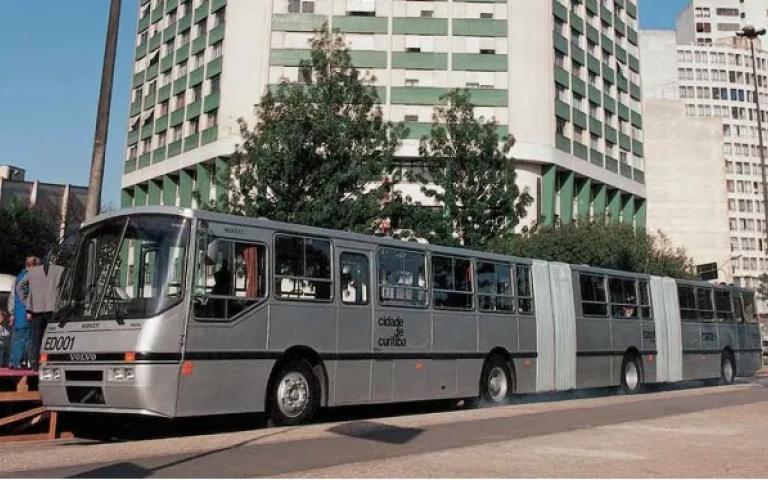The bus is the most widely used means of transportation in Latin American countries. So required at the regional level, the passenger transport sector is the one that has changed the least over the years, and it was the articulated configurations that marked a before and after when it came to moving people.
The "two-in-one" urban bus allowed the addition of a second, shorter chassis to accommodate a greater number of passengers and thus lower the operating costs of the lines. But it was the second step, that of adding an extra joint, generating the possibility of carrying up to 300 passengers in a single unit, which would change the way people move in cities.
The bi-articulated bus celebrates 30 years of successful operation since its appearance in Curitiba, a Brazilian city that began tests with these units by Volvo Trucks & Buses, a pioneer brand in this regard.

The ideal solution for BRT
The development of the bi-articulated bus was born from a partnership between Volvo and Curitiba. At the end of the 1980s, the municipality sought out the manufacturer, which has its Latin American headquarters in that city, with the proposal to develop a model with an even greater capacity than the already recognized articulated ones that worked in its mass transportation system.
The bi-articulated buses are four-axle, two-articulated buses with a high passenger capacity that fulfill their tasks in the BRT (Bus Rapid Transit or Rapid Transit Bus), an integrated transportation network with exclusive lanes, integrated and prepaid fares, and boarding stations. Quick.
Today, this network transports more than 1.3 million passengers a day in Brazil alone, with a total of 250 lines, 329 stations, 22 terminals and 6,500 stops. At the regional level, it operates in 61 cities, with a transport flow of almost 21 million passengers per day.

Volvo's current model is the largest urban transport bus in the world. Depending on the body configuration, it can be up to 30 meters long and accommodate up to 300 passengers.
“The bi-articulated vehicles represented a leap in capacity and quality in the movement of people in large cities. Today, Volvo is in BRT systems in dozens of countries, with more than 5,000 vehicles sold”, assures Fabiano Todeschini, representative of Volvo Buses in Latin America.
The model currently marketed in the region is the B340M, a mid-engine B12 line bus, which delivers up to 340 horsepower. The position of its engine is ideal for operation in BRT systems that, generally, have access to the buses not from the road level, but from high platforms, Thus, with the low height of the engine, and its position between the axles of the front wagon, a completely flat floor and maximum passenger capacity are achieved.
TransMilenio, the mass transit system of the Colombian capital, has more than 1,200 vehicles in operation with this configuration.

